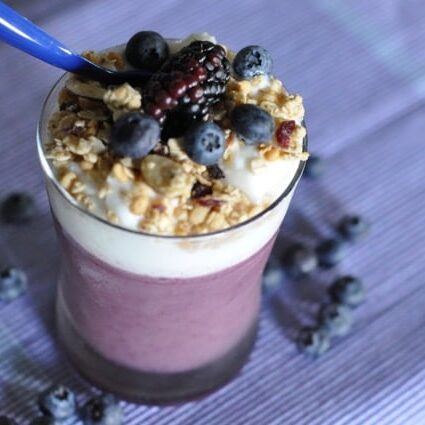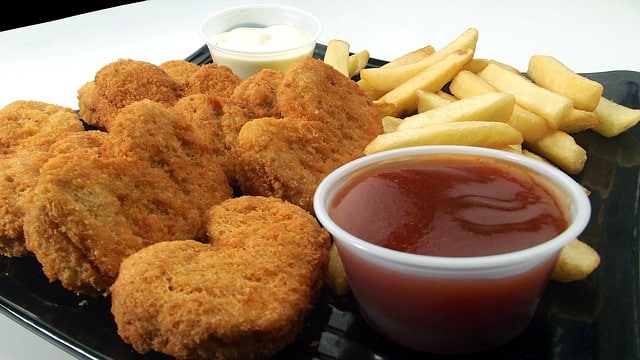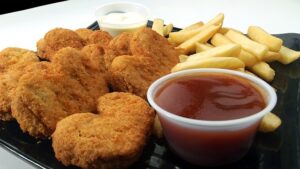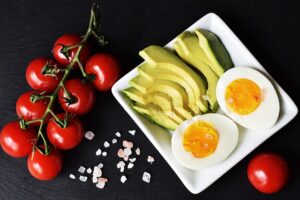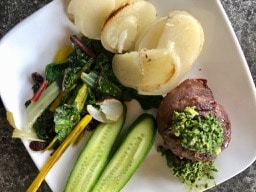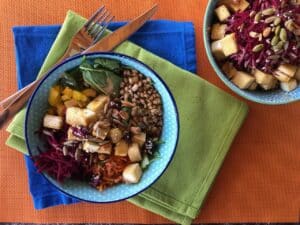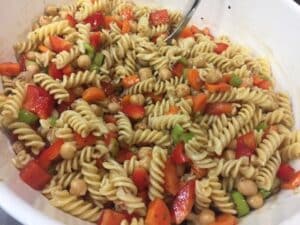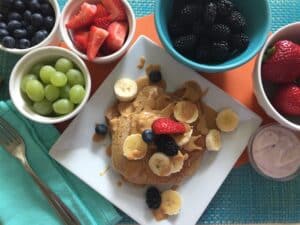Processed Foods: Does your diet need an upgrade?
Data from the 2015 Canadian Community Health Survey found that almost half (48%) of the foods Canadians eat are from ultra-processed foods suggesting that many Canadians need an upgrade to their diet. Are you one of them?
Almost all food is processed in some way. Food processing includes physical, biological and chemical processes that occur after foods are separated from nature, but before they are consumed or used in the making of meals. Food is not “healthy” or “unhealthy” just because it has been processed. But then how do we separate foods that have been processed but are still healthful versus those that have been processed and are less healthful?
Are all processed foods the same?
In the past 50 years, packaged, ready-to-eat, convenient food products have become more prominent and are dramatically impacting what we eat. These processed food products are displacing home cooking and dietary patterns that were based on freshly prepared meals. In other words, we are eating more processed, convenience food products and fewer fresh foods. This change in dietary pattern is impacting our health.
Are all processed foods the same? No! NOVA is a food classification system that categorizes foods into four groups, based on the extent and purpose of the processing that foods undergo.
Group #1: Unprocessed or minimally processed foods
Foods in this category are fresh or whole foods from plants or animals; or are minimally processed meaning that foods are altered in ways that do not add or introduce any new substance like fats, sugars or salt, but often remove part of the food. The purpose of the processing in this category is to allow for longer storage use like chilling, freezing, drying or pasteurization. There have been no added salt, sugar or fats in the processing.
Examples of foods in this category include:
- Fresh, dried or frozen vegetables or fruit
- Grains, legumes, meats, fish, poultry, eggs and milk (pasteurized or powdered)
- Grits, flakes or flour made from corn, wheat, oats
- Pasta, couscous, polenta
- Tree and ground nuts without added salt or sugar
- Fresh or pasteurized vegetable or fruit juice without added sugars, flavours or sweeteners.
- Spices and herbs
- Plain yogurt with no added sugar or artificial sweeteners added
- Tea, coffee, drinking water.
- Dried mix fruits
These foods are the basis of healthy dishes and meals.
Group #2: Processed culinary ingredients
This group includes items like fats, oils, sugars and salt. These foods are not usually consumed by themselves. They are used in the preparation and cooking of foods from Group #1 to make tasty, diverse, nourishing dishes and meals.
Group #3: Processed foods.
These foods are made by adding in fats, oils, sugars, salt and other ingredients to minimally processed foods to make them more durable and palatable and by different methods of preservation.
Examples of foods in this category include:
- Simple breads
- Cheeses
- Salted, pickled, cured meats, fish and seafood
- Canned plant or animal foods
- Vegetables, legumes, fruits and animal foods preserved in oil, brine or syrup
- Beer, cider and wine.
In moderation, these foods can be part of a healthy diet, depending on how they are prepared and used in meals.
Freshly made dishes and meals
Freshly made dishes and meals are made from combining:
- unprocessed or minimally processed foods (Group 1) with
- processed culinary ingredients (Group 2) and
- modest amounts of processed foods (Group 3) to form the basis of healthful meals.
When made from a variety of foods of mostly plant origin, these food promote good health.
Group #4: Ultra-processed foods and drinks
Ultra-processed foods and drinks are made from substances extracted from foods or derived from parts of food, and often have flavours, colors and other additives that imitate or intensify the sensory qualities of foods. They have little (if any) intact foods. They usually have five or more ingredients.
These foods are ready-to-eat (and so are convenient), highly attractive, highly profitable and very competitive with foods that are naturally ready to eat and freshly prepared dishes and meals. They may displace cooking and consumption of freshly prepared dishes and meals.
Because of how these foods are made, ultra-processed foods and drinks have a lower nutritional quality compared with all other foods. These food products are less filling, less satisfying and tend to be consumed in large amounts.
The more ultra-processed foods are eaten, the poorer the quality of diet and the higher the risk for chronic diseases (like high blood pressure, dyslipidemia and metabolic syndrome).
Examples include:
- fast foods, sugary drinks, snacks, chips, candies, cookies
- sweetened milk products like ice cream, sweetened and flavoured yogurts and milk-based drinks,
- sweetened juices and drinks,
- sugared, fatty or salty packaged snacks, chocolate and candies,
- industrialized breads,
- packaged soups and noodles,
- margarine,
- chicken and fish “nuggets” or “sticks”,
- “ready meals” like pizza, pasta dishes, French fries,
- sweetened cereals,
- sauce and dressings
- Whisky, gin, rum, vodka.
What kinds of food do you actually eat?
Many people would benefit from becoming aware of the kinds of foods they actually eat (versus the kinds that they believe they routinely eat). Questions to consider include:
- How often do you use a knife to prepare foods? If you are not chopping, it is unlikely you are cooking with Group 1 foods (unless you are using kitchen helpers, for example, prechopped or frozen vegetables).
- How often do you grocery shop? Less frequent grocery shopping (less than once a week) may suggest you are eating more processed foods or less whole foods.
- What does your plate of food routinely look like? What kinds of foods typically make up your plate? How colorful is your plate?
- What does your meal planning system look like? Where do you get your meal inspiration from? How do you decide what foods to eat for your meals?
Another way to examine what you actually eat is to keep a food journal. From here, you can look at adding in whole foods and minimally processed foods to your plate.
Does your diet need an upgrade?
I am not saying that you should *never* eat ultra-processed foods. But I am inviting you to examine the kinds of foods that make up the majority (80%) of what you eat. If you need help with ideas and strategies for adding in more foods from Group 1 so you can reduce foods from Group 4, here are some immediate actions you can take:
- Take a cooking class
- Follow a food blog from a trusted source
- Dust off your cookbooks and put one in plain site for a visual cue to meal plan
- Book an appointment with me or another registered dietitian to help you.
For a more detailed list of the foods found in each category:
References:
Monteiro CA, Cannon G, Levy RB et al. NOVA. The star shines bright.
[Food classification. Public health] World Nutrition January-March 2016, 7, 1-3, 28-38
Moubarac JC. Ultra-processed foods in Canada: consumption, impact on diet quality and policy implications. Montréal: TRANSNUT, University of Montreal; December 2017. https://www.heartandstroke.ca/-/media/pdf-files/canada/media-centre/hs-report-upp-moubarac-dec-5-2017.ashx?rev=c844895571d0415cb2e0ab96e3512a46&hash=2CFC9E36083191FA8ECA819B447DA701
Tagged in: Calgary, calgary dietician, Calgary Dietitian, Calgary Nutritionist, goal setting, healthy cooking, healthy eating, meal planning, midlife wellness, Over 40, processed foods, ultra processed food
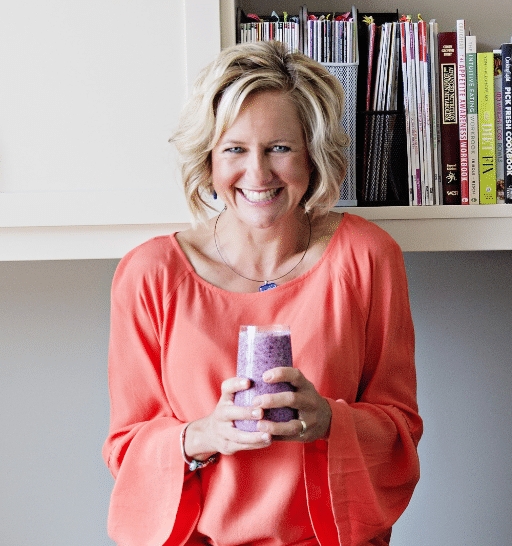

Welcome to the Energize Nutrition blog, where we share evidence-based nutrition content, designed to empower people’s midlife. Take a look around to find information on feeling your best.
If you need more individualized support, reach out to set up a free discovery call with Kristyn Hall.
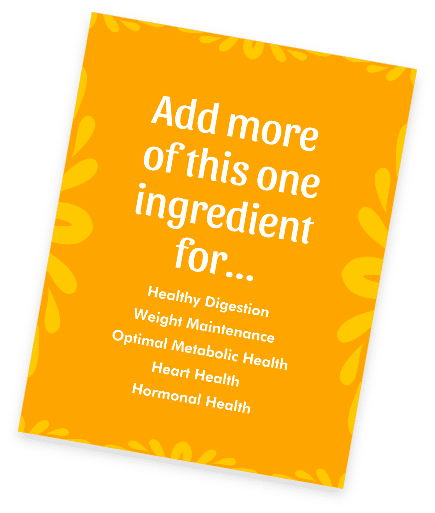
Battling chronic hunger, poor energy, or inflammation? Discover what this powerful ingredient is and why it might be the solution!
